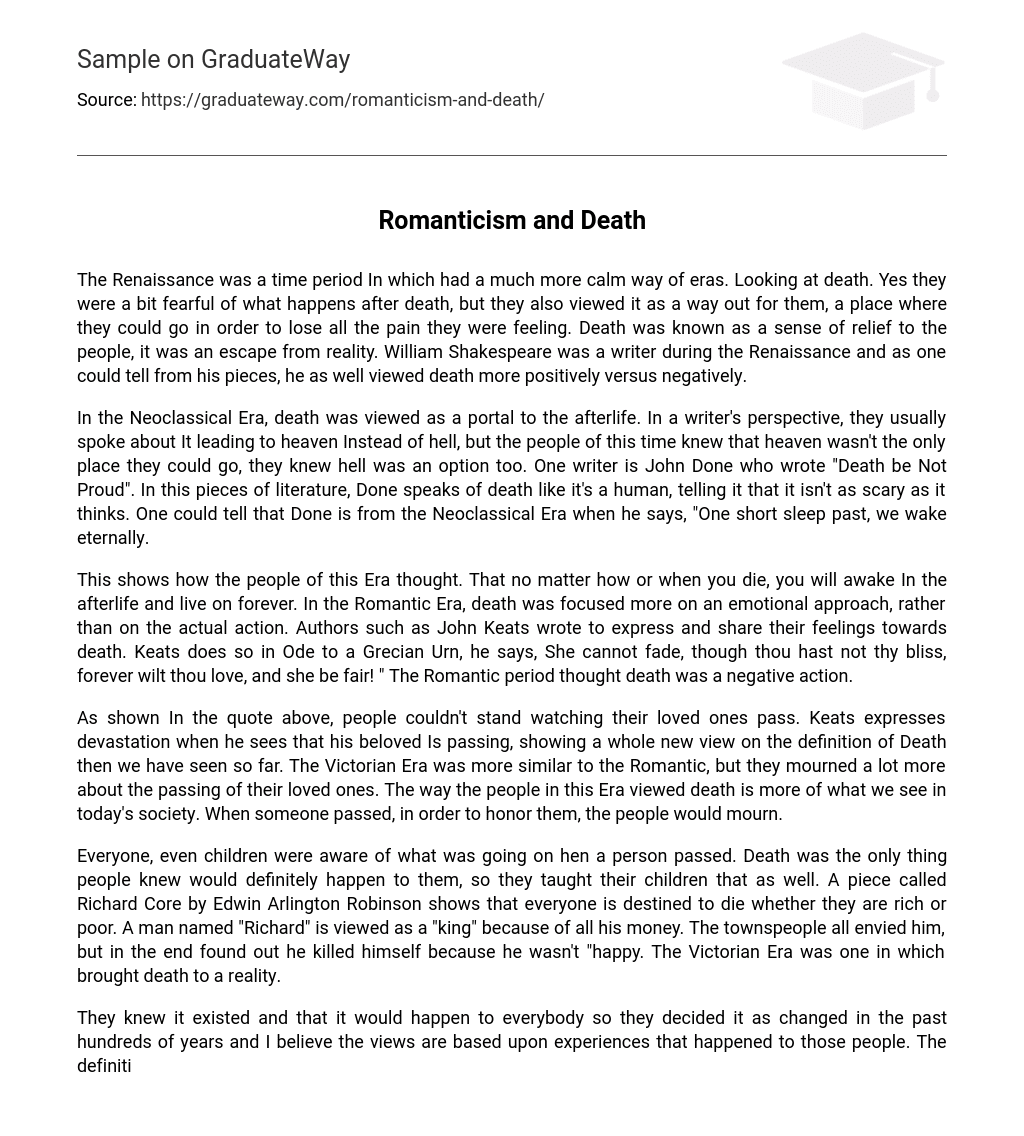The Renaissance was a time period In which had a much more calm way of eras. Looking at death. Yes they were a bit fearful of what happens after death, but they also viewed it as a way out for them, a place where they could go in order to lose all the pain they were feeling. Death was known as a sense of relief to the people, it was an escape from reality. William Shakespeare was a writer during the Renaissance and as one could tell from his pieces, he as well viewed death more positively versus negatively.
In the Neoclassical Era, death was viewed as a portal to the afterlife. In a writer’s perspective, they usually spoke about It leading to heaven Instead of hell, but the people of this time knew that heaven wasn’t the only place they could go, they knew hell was an option too. One writer is John Done who wrote “Death be Not Proud”. In this pieces of literature, Done speaks of death like it’s a human, telling it that it isn’t as scary as it thinks. One could tell that Done is from the Neoclassical Era when he says, “One short sleep past, we wake eternally.
This shows how the people of this Era thought. That no matter how or when you die, you will awake In the afterlife and live on forever. In the Romantic Era, death was focused more on an emotional approach, rather than on the actual action. Authors such as John Keats wrote to express and share their feelings towards death. Keats does so in Ode to a Grecian Urn, he says, She cannot fade, though thou hast not thy bliss, forever wilt thou love, and she be fair! ” The Romantic period thought death was a negative action.
As shown In the quote above, people couldn’t stand watching their loved ones pass. Keats expresses devastation when he sees that his beloved Is passing, showing a whole new view on the definition of Death then we have seen so far. The Victorian Era was more similar to the Romantic, but they mourned a lot more about the passing of their loved ones. The way the people in this Era viewed death is more of what we see in today’s society. When someone passed, in order to honor them, the people would mourn.
Everyone, even children were aware of what was going on hen a person passed. Death was the only thing people knew would definitely happen to them, so they taught their children that as well. A piece called Richard Core by Edwin Arlington Robinson shows that everyone is destined to die whether they are rich or poor. A man named “Richard” is viewed as a “king” because of all his money. The townspeople all envied him, but in the end found out he killed himself because he wasn’t “happy. The Victorian Era was one in which brought death to a reality.
They knew it existed and that it would happen to everybody so they decided it as changed in the past hundreds of years and I believe the views are based upon experiences that happened to those people. The definition on death changes with what one experiences causing them to see things differently. These days we see death as possibly all four of the examples I listed. Some believe it’s something to be a bit fearful of because we don’t know what happens after we die, some believe we go to heaven or hell, normally we are affected emotionally over our loved ones and lastly we all know that death is destined for each and every one of us.





